User Guide: Navigating to Locate Resources
This user guide page is dedicated to my students as a reminder that every submission is a reflection of your growth as a future designer.
Striving for design excellence begins with every single task, no matter how small. Instead of focusing on big words like ‘problem-solving,’ take a deep breath and start by mastering the basics—Earn your way through dedication and effort. Every detail matters, and every step builds the foundation for your future.
6 Milestones
in Learning Sketching for Ideation
The Doers are the major thinkers.
—— Steve Jobs ——
“It’s easy to take credit for the thinking. Oh I thought of this three years ago. But when you dig deeper, you find that the people that really did it were also the people that worked through the hard intellectual problems.” more video info here.
Work Ethic Trumps Talent.
I’m always fascinated by the growing phenomenon of students jumping into CAD output after just a few rough doodles. How can you be so sure that you are a greater thinker than students who have put in hard work? How are you so certain that your solution is more thoughtful than that of students who have deliberated on the same project ten times—going back and forth from low-fidelity, medium-fidelity to high-fidelity (Type ABC)—before committing to CAD?
It's about Commitment and Effort. There's No Shortcut.
Caterina Rizzoni from Mammotome shared a self-made list of 150 drawing tasks from her school days. Download here.
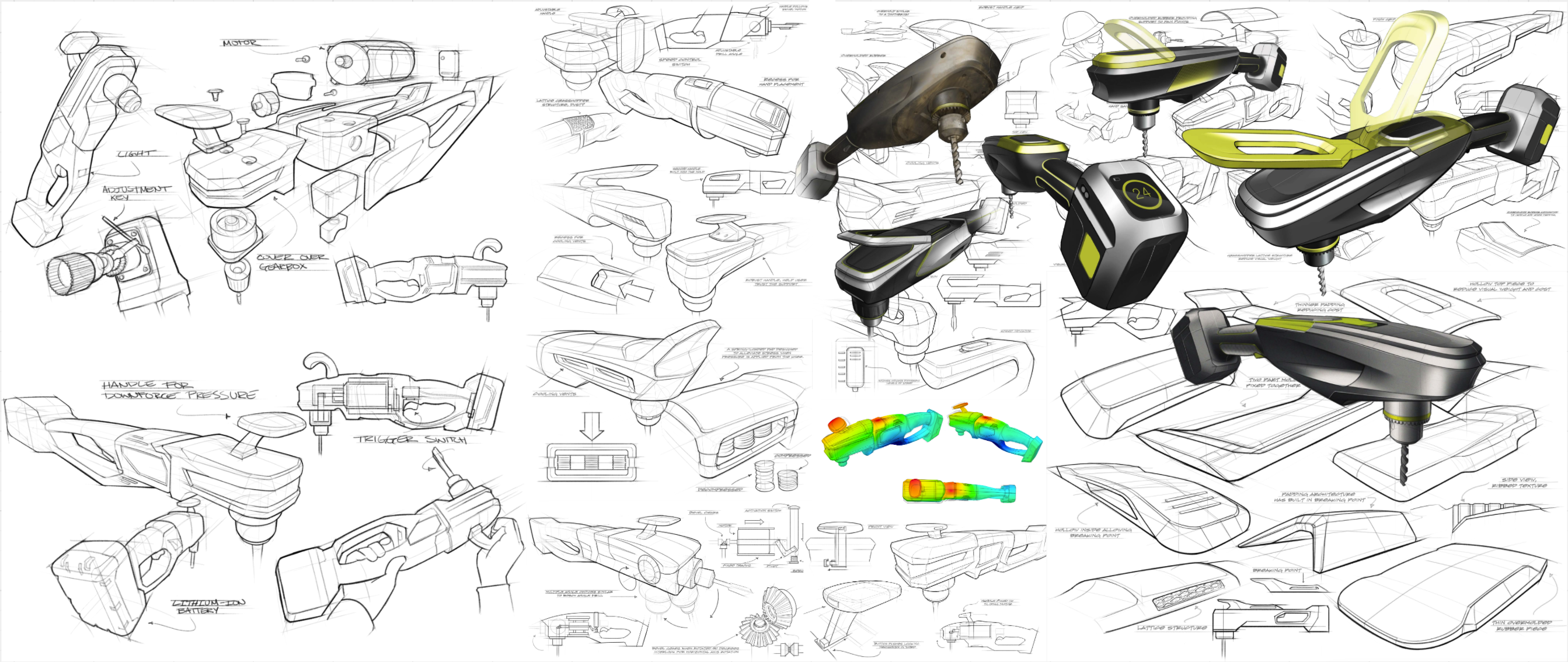
Type B Ideation sketch and PS Type C Proposal_Coleman Middendorf, Class of 2027
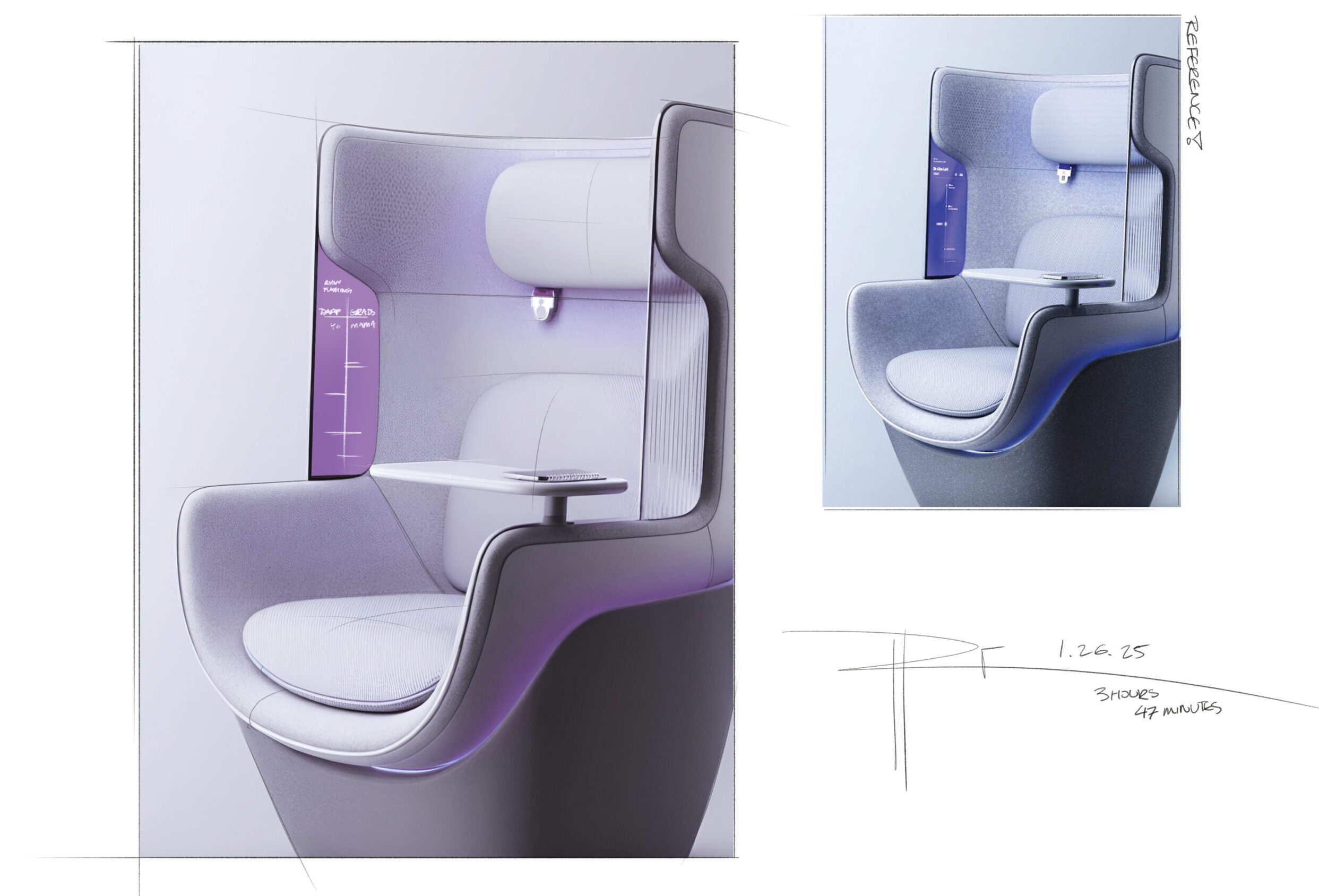
3.5 hours PS Mastercopy_Ryan Fleming, Class of 2027
Milestone 1
Sketch -Building Models on Paper
Training Your Eyes to Perceive Volume in 2D Media, Details of the Design, then Building it on Paper.
Sketching Is Designers' Language
“Beware of A Designer Who Talks Too Much”
—— Chuck Jordan, the former VP of design at GM ——
Design Communication Needs to Be Executed with Grace.
Design considerations will soon become substantial and highly complex. High line quality is a must—it creates room for deeper, more detailed deliberation. Don’t be sloppy.
Design fidelity increases during iterations, and quick, clear communication is key.
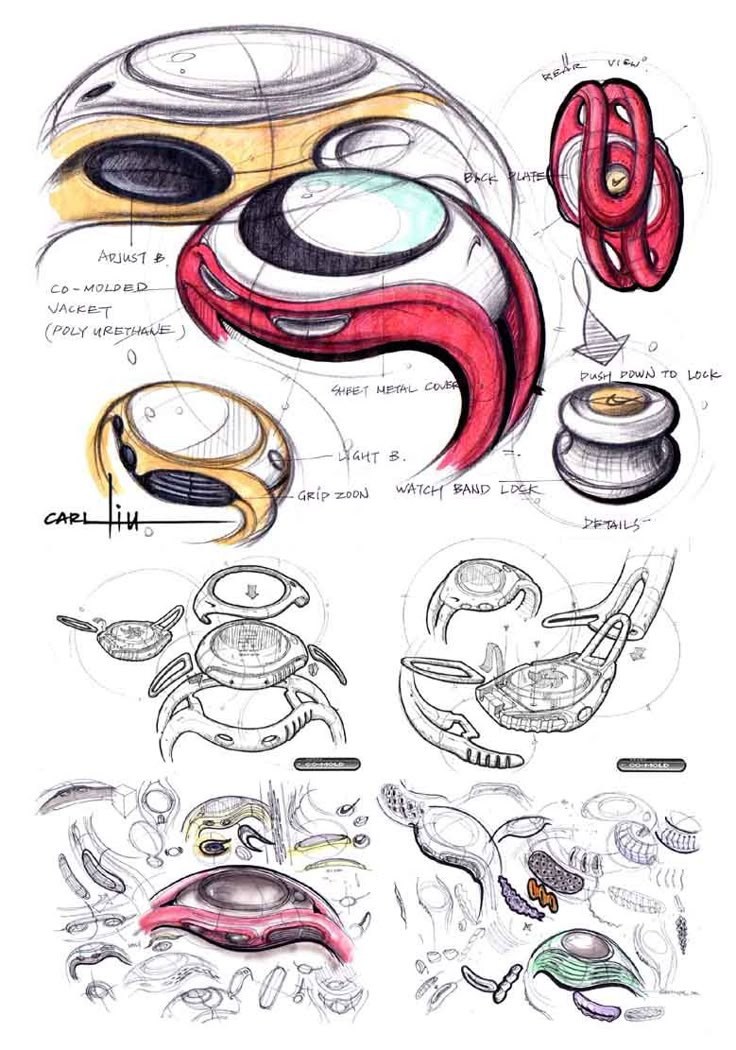
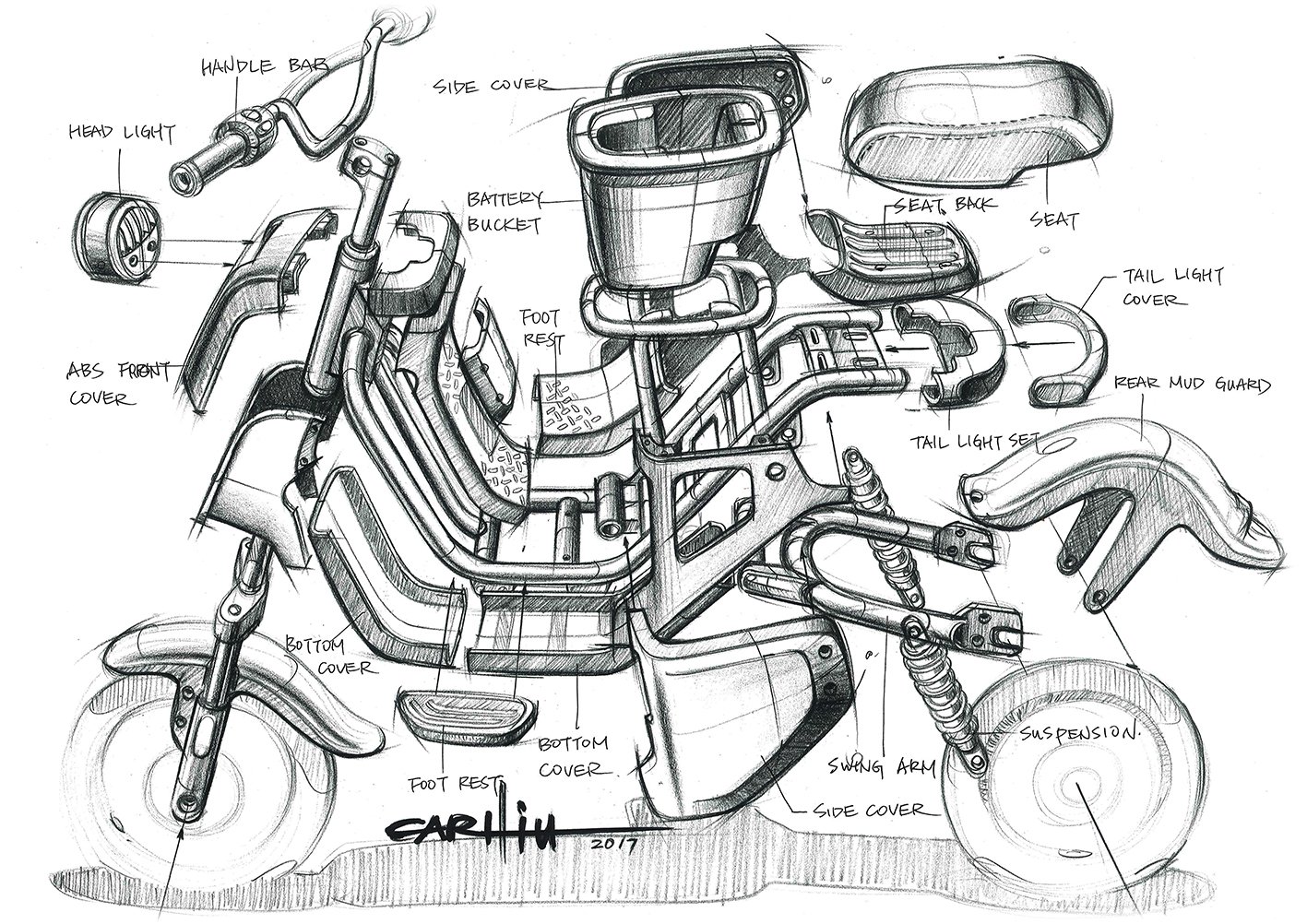
Carl Liu, Senior Design VP of Niutron Technologies.
Milestone 2
Visualization Boost Exercise
Take baby steps
You are not ready for ideation yet, as it requires cross-disciplinary knowledge. First, follow these simple tasks and see if you can perceive volume and sculpt surfaces in 2D media. Try parallel projection and isometric for surfaces sculpting when task gets complex.
All four challenges should be ez pz, If not, go back to Step 1. It is normal to go back and forth a few times.
Ideating with basic aesthetics principles.
Apply addition and subtraction with isometric -> perspective
Use isometric system to create a mind bending space.
Use planes to visualize the volume of a product.
Reshape perception on the go.
Adjusting light, shadow, and form in real time to not only refine execution but also contemplate the emotional and aesthetic impact of each design choices.
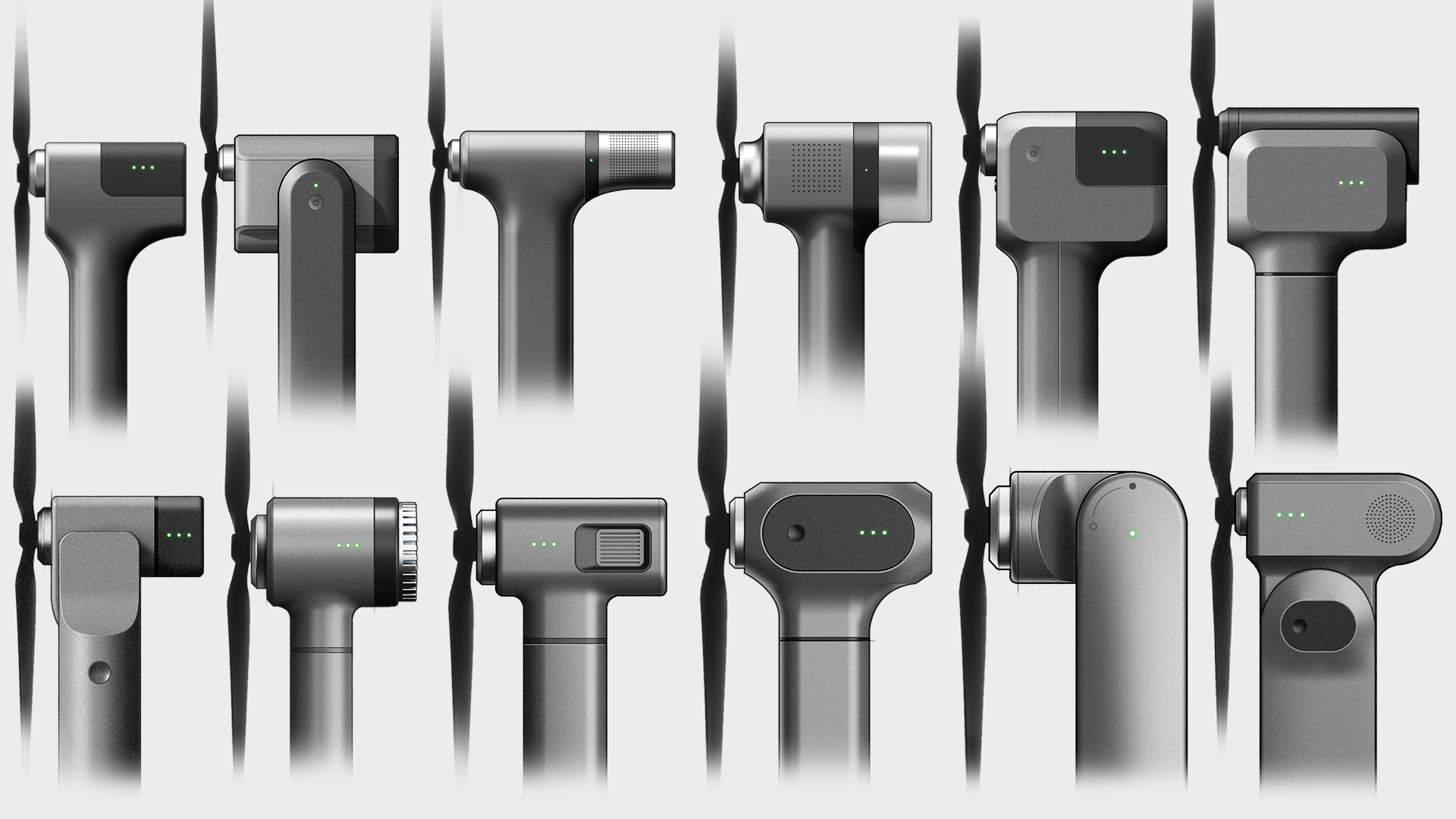
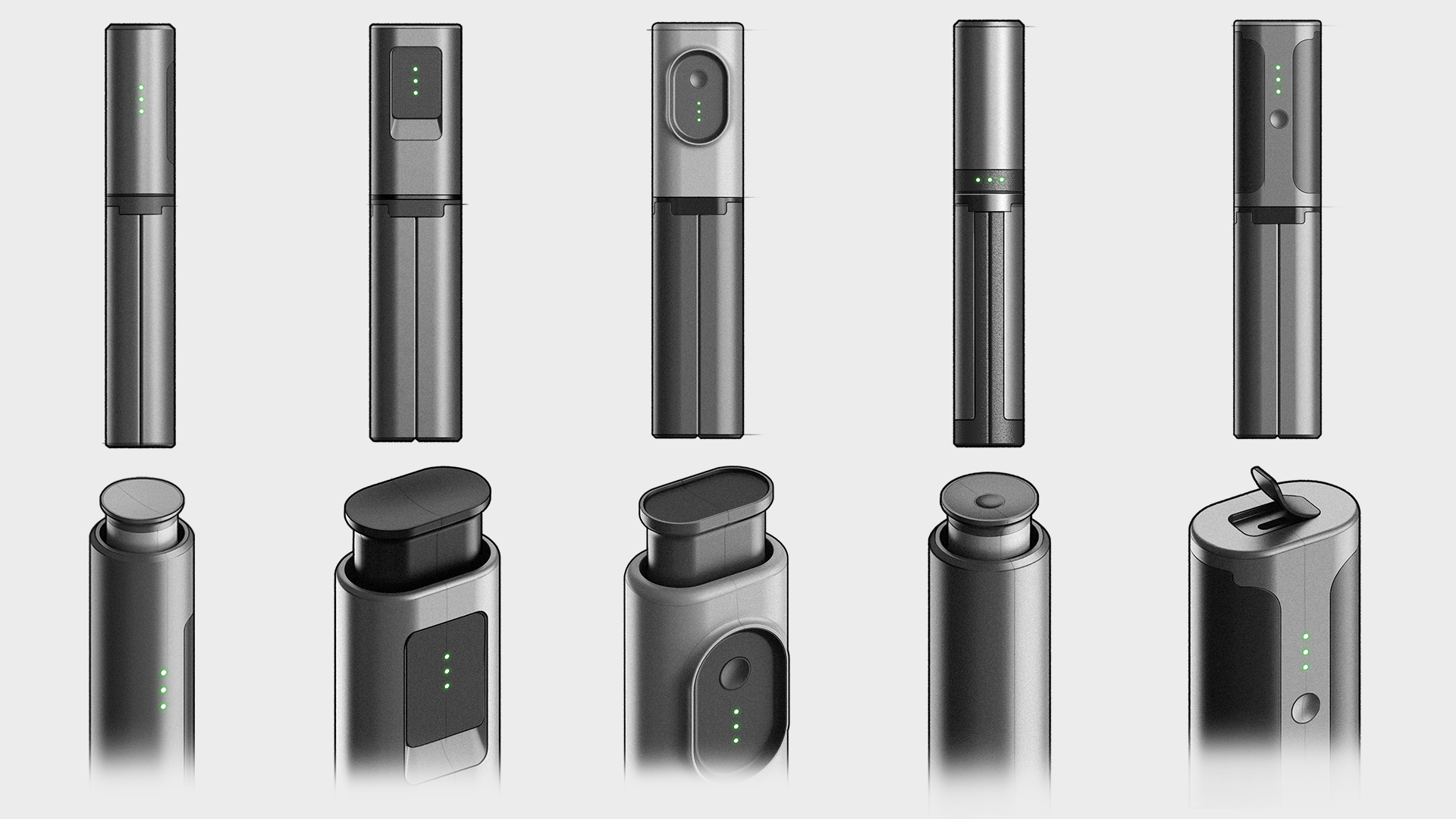
PS Type C hi-fi details iterations_Coleman Middendorf, Class of 2027
“There's no magic in magic. It's all in the details.”
—— Walt Disney ——
Milestone 3
The Power of the Small and Mighty.
Before you throw in big words like ‘system’, ‘service design’, ‘interdisciplinary’ in your presentation,
Be humble—start with the small and mighty. Feel the power of details, interdisciplinary consideration. Use sketching to take notes and educate yourself before claiming to tackle big questions.
* Based on what you’ve learned from these practices, take a baby step and create 10 variations using the same interface layout.
Milestone 4
Train Your Eyes to Recognize
Design Excellence.
“Anyone can create CAD models—engineers can do that. When hiring junior designers, we pay attention on how they think. The best way to assess their thinking process is through their sketch deliberation.”
—— Todd Kauranen, Design Strategist / Innovation Catalyst ——
Sketching Is A Powerful Self-learning Tool!
Take an in-depth look at existing products, break a whole design into smaller design components and design elements, and use an explanatory sketch to study usage scenarios, inspirations, internal components, assembling, material choice, manufacturing process.
All Design Choices Must Be Crafted through Aesthetics,
and Executed with Grace and Ease!
Aesthetics Elevate Design Excellence!
Aesthetics enhance functionality, raise the awareness, create emotional connections, improve the user experience, encourage interaction and early adoption, communicate meaning, and foster a sense of harmony and balance.
—— Profess Brigid O’Kane, DAAP, UC ——
Train your eyes to recognize subtle nuances.
Milestone 5
Communicate without Words.
Aesthetis is Also A Critical Desicision.
AI only interprets images at face value. AIGC amplifies the false accusation that aesthetics in design are inherently superficial. Aesthetic is a challenging topic—take the time to understand its interdisciplinary nature.
Read all five dropdown menus to understand the power of aesthetics.
How Literature and Art Can Support and Elevate Design Thinking
Aesthetics require interdisciplinary knowledge from art, psychology, materials & processes, business, and more.
Learning by doing. It’s a steep learning curve due to its interdisciplinary nature.
Milestone 6
Ideation
Buckle up, Learning by Doing!
Keep these in mind while ideating!
More Ideation Practice tips and Demos.
Designers make countless micro-decisions with each stroke of the pen.
“Our students, being so young, often have a limited view of the field and may make broad assumptions that unintentionally limit their potential. “
Design Is About
WHY NOT
Develop Greater Sensitivity for Design Excellence
Saying no to a hundred—sometimes a thousand—other good ideas is not an act of malice. Every time we reject an option or challenge our own design output, it’s out of a painful, obsessive love: a love for the perfect product, for the user’s experience, for simplicity.
Our job isn’t to nod. Our job is to stand at the highest point with the most critical eye and ensure that only the essential, the pure, the magical gets through.
Because making one great product is infinitely harder—and infinitely more important—than making a hundred mediocre ones. It requires sacrifice. It requires choice.
Every no we say is in service of a bigger, more important, and louder yes—a yes that’s worth pouring our lives into. A yes that can change the world.
